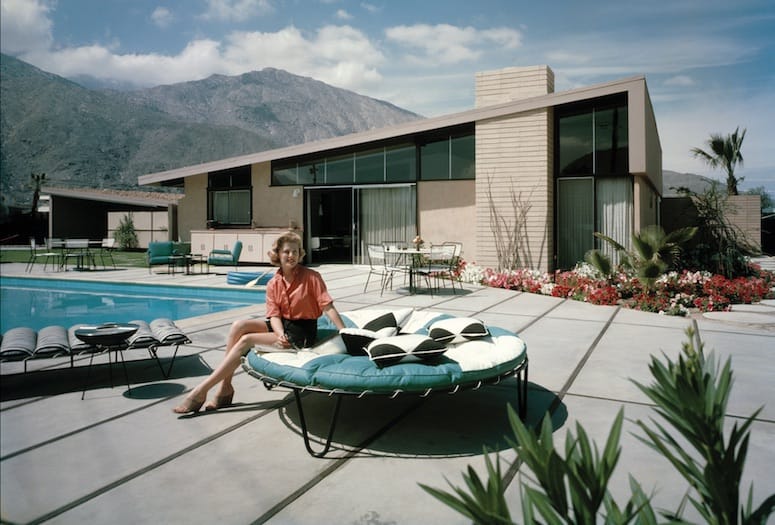

the valley
DESIGN
In a year that has brought us to our collective knees, the concept of modernism may not always be top of mind, but its power never wanes. Its minimalist designs and open spaces brighten our shelter-at-home experience, proving the elegant, yet informal, elements of the midcentury style have stood the test of time — and for good reason.
From the late 1950s through the early 1970s, many desert homes were built not only for efficient use of space but also for the revolutionary indoor-outdoor living associated with the style.
“The last time design was going to change the world, and did, was the midcentury modern period,” says designer and writer Brad Dunning.
“During those glorious, wildly creative decades, architecture was particularly groundbreaking, exuberant, and intended to transform the whole person and society.” The aesthetic emphasis, he says, “was not only on dramatic and innovative angular pavilions of glass, but on fresh air and sunshine, health-improving aspects of the home, easier-to-clean houses meant to liberate the housewife and nurture the children.”
Modernism proliferated with the availability of new building materials and techniques, and designers across all industries felt emboldened to first consider an object or structure’s function, as opposed to its decorative form. In the desert, where Hollywood luminaries met imaginative architects like William Cody and E. Stewart Williams, experimentation was welcomed, encouraged, and even expected. Thus modernist architecture — with the help of interior designers such as Arthur Elrod — redefined a sleepy, Spanish-infused town that was already lounging poolside.
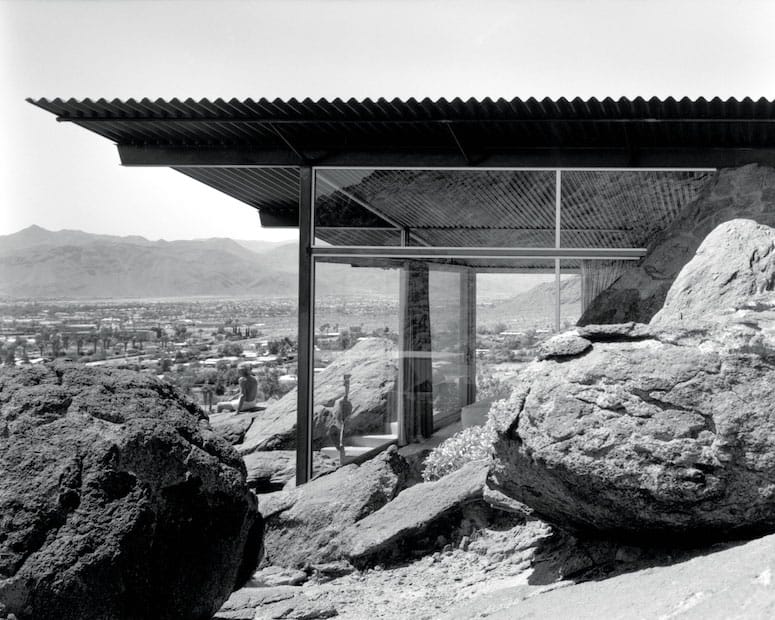

PHOTOGRAPH BY JULIUS SHULMAN, J. PAUL GETTY TRUST, GETTY RESEARCH INSTITUTE, LOS ANGELES (2004.R.10)
Frey House II in Palm Springs.
Modernism promotes a relaxed lifestyle
Some 60 years since its fledgling moments, modernism embodies how we aspire to live, favoring relaxation and recreation over busyness and materialism. “All of the things everyone on HGTV wants, that’s exactly what modernism is,” says Adele Cygelman, author of Palm Springs Modern and Arthur Elrod: Desert Modern Design. “Natural light, an open floor plan, and indoor-outdoor flow. It’s well thought out, it’s intelligent, and it’s functional. I don’t think you need anything else in a house.”
While our needs shift toward more working, dining, and even educating at home, Janice Lyle, director of Sunnylands Center & Gardens in Rancho Mirage, says the basic tenets of midcentury modern design remain especially meaningful for thriving in the desert. We’ve seen the pandemic spur escapism from urban settings and a desire to convene with nature. “If our physical structure can make relaxation more possible, then that seems to be a satisfying aspect of the design,” Lyle says. Her experience living “in nature” while residing in Frey House II as director of the Palm Springs Art
Museum altered her perspective and values. “What you learn, just based on the home’s simplicity and its perfection of the views, is that there is great freedom that comes from the discipline of the design.”
Modernism peeled away the pomp and ornamentation, leaving svelte structures dedicated to their essential functions. And, despite vast offerings of collectable midcentury design, inhabitants lived lighter. “You have built-ins so you don’t bring in all the heavy, clunky grandma furniture,” Cygelman says. “You literally have less baggage to carry around.”
Minimalism was a happy byproduct of modernism. The widespread desire to do more living with less stuff consistently leads us back to modernist design.
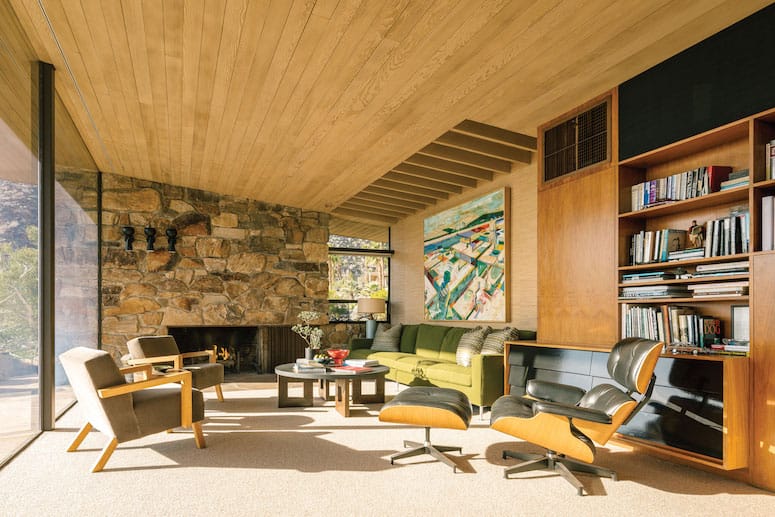

PBHOTOGRAPH BY LANCE GERBER
E. Stewart Williams-designed Edris House in Palm Springs.
Modernism facilitates shared identity
New Hollywood buys homes. Weekenders become residents. The media publish stories with photos of eye-popping architecture. “For such a small dot on the map, Palm Springs has a huge swing,” Cygelman says. “We have the best collection of modernist houses in the world; you can’t replicate that.”
Dunning suggests commercial buildings should share more in the area’s reputation as a midcentury showcase. “Our town-scape should reflect our love and respect for architecture and design as well,” he says. “Buildings like the Carnell Building, Kocher-Sampson, Town & Country Center, and many others deserve a historically accurate restoration.”
At Sunnylands, a modernist gem in its own right, Lyle notes, “When people from all over the world arrive to this very special place, which has a midcentury philosophy at its core, they feel something unique and it frees them to be more engaged in creative problem-solving.”
The city — much of the Coachella Valley, in fact — celebrates the aesthetics every February during Modernism Week, which offers the Modernism Show and Sale, home tours, lectures, panel discussions, screenings, and parties over 11 days. Organizers tease the event in October with the Fall Preview Online Experience — seven streaming programs that replace the usual in-person events to help curb the spread of COVID-19.
Several books about desert modernism enjoy the staying power of their subject, particularly Cygelman’s debut volume, Palm Springs Modern. They encourage a new generation of architects and designers to meet the style’s ideals and innovate to satisfy new needs, particularly in terms of smart technologies.
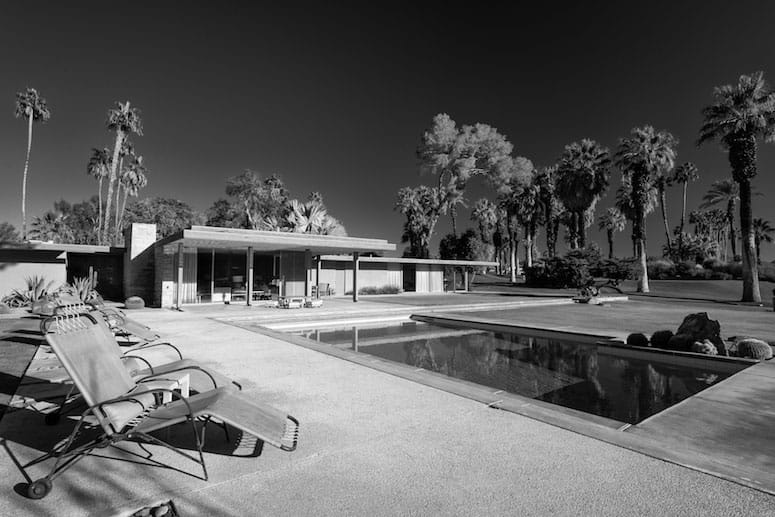

PHOTOGRAPH BY JIM RICHIE
William F. Cody designed the Jorgensen/Mavis residence in Rancho Mirage.
Modernism propels us
Dunning notes that modernism “was forward-facing the future with open arms and a martini.” Midcentury architects, who introduced some of the early design considerations for sustainability and energy-efficiency, would have cheered on contemporary architects, such as Sean Lockyear and Lance O’Donnell, who examine the environment in the context of new materials, develop new forms, and find new avenues for modernist philosophy.
Meanwhile, the bones of modernist originals create a visceral response that spurs homeowners to keep them, Cygelman says. “You can live in one when you’re single or newly married and it will see you through every stage of your life. You may make a few accommodations, but you can age in place.”
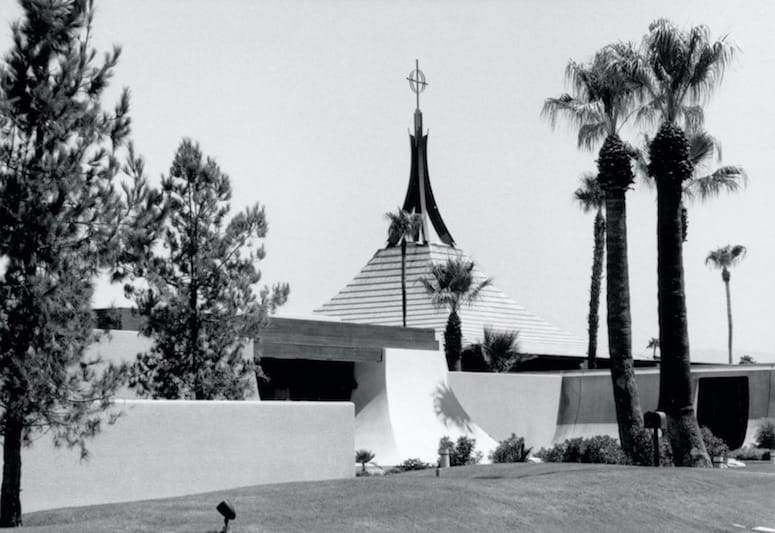

PHOTOGRAPH COURTESY PALM SPRINGS LIFE ARCHIVES
St. Theresa’s Church in Palm Springs.
Modernism bends and flexes with one’s lifestyle, which will serve us well as we reassess our home’s efficacy through the coming years. “People were very optimistic about the future post World War II,” Cygelman adds. “We’ve lost so much of that, but I think people still look at modernism and feel optimistic. I think it gives people hope.”
Hope might be one of the new essentials for design — with antimicrobial surfaces and touch-free technology, wellness rooms for exercise and meditation, and home offices that prioritize comfort and productivity.
Modernism still moves us and supports the changes we make in our lives and in our homes. A prediction for the pandemic’s impact on design: Function will lead once again.
For now, our open spaces encourage us to gather (safely) over classic cocktails and trending mocktails. Glass panes offer views to strengthen our spirit. In these moments, design matters. We remember why we love this place and how architecture inspired us to live without borders between indoors and out.
We’re still talking about it, celebrating it, preserving it, photographing it, and learning about the people behind it. Most of the time, the majority of us can agree on modernism.
• READ NEXT: Cacti Lend Stature to the Landscape.




